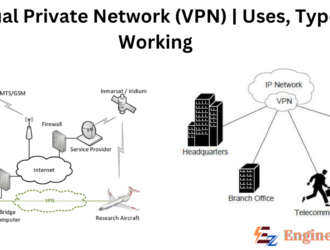Paper Mill | Process, Requirements, and it’s Types
Paper Mill Pulp making and Paper making are the two main processes in a paper…
Travelling Wave Tube | Construction, Working and Applications
Travelling Wave Tube A travelling wave tube is a specialized vacuum tube that is used…
Stepper Motors | Types, Parameters, and Characteristics
Stepper Motor Stepper motors convert electrical pulses received by their excitation (control) windings into discrete…
Pyrolysis | Basic Principles, Types and Uses
Introduction Pyrolysis is a process that breaks down organic material at temperatures between 400 °C…
Waste to Energy | Methods, Economic Impact and Future Trends
Introduction Waste-to-energy (WtE) or energy-from-waste (EfW) is a way to produce electricity and heat from…
Virtual Private Network (VPN) | Types, Working and Uses
Virtual Private Network A Virtual Private Network (VPN), which illustrates virtual confidential organization, lays out…
Radar | Block Diagram, Working Principle and it’s Applications
Radar RADAR stands for "Radio Detection and Ranging System". Radar is a detection system that…
STATCOM | Static Synchronous Compensator
Introduction Static Synchronous Compensator was developed as an advanced static VAR compensator where a voltage…
SSSC | Operation, Modelling, and Applications
SSSC The Static Synchronous Series Compensator (SSSC) is a series-connected FACTS controller based on VSC…
















Comments